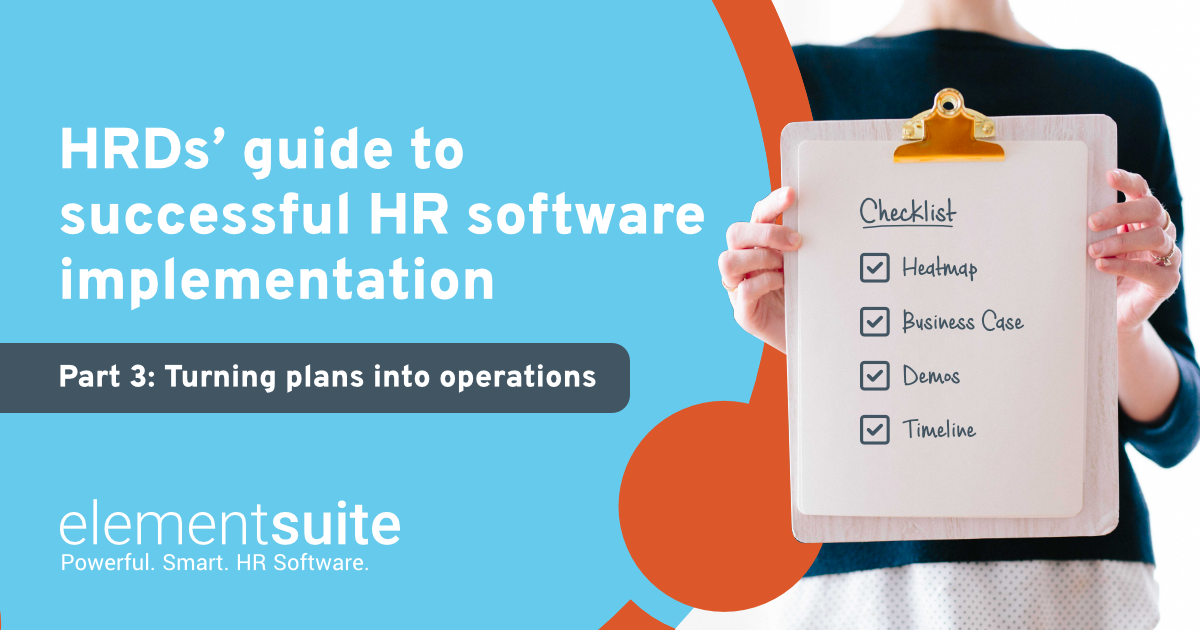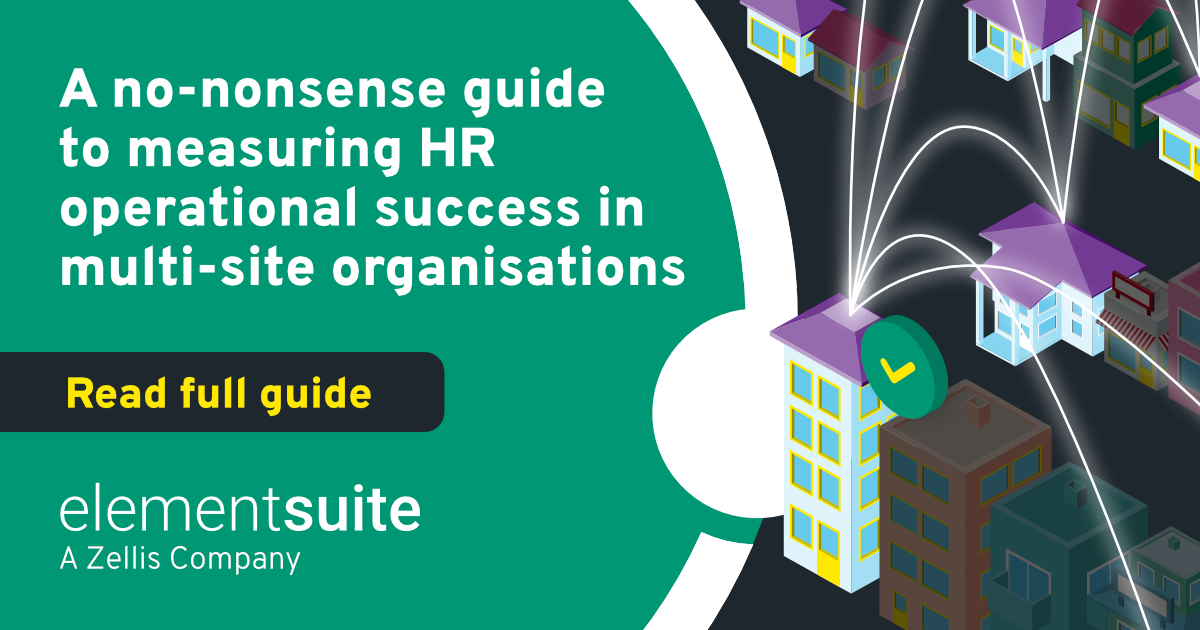SUNITI VYAS | 6 SEPTMBER 2023
Before embarking on the exciting journey of new HR software implementation, be sure to check out Part 1: Identifying your requirements and Part 2: Choosing your vendor to discover what you need from your new HR software and how to get the most out of your demos before deciding on a vendor.
Now that you know what you want from a new HR software, your organisation is behind you in this decision, and you have a vendor that matches all your needs, it’s time to start the implementation process.
Garnering internal support for success
Once you’ve selected your HR software vendor, it’s time to cultivate your in-house champions. The first crucial step is going back to the original stakeholders whom you initially proposed the new software solution to, which we discussed in Part 1 – these will be your ambassadors.
Convincing your colleagues and employees that it’s time to make a change, albeit a hugely positive one, from traditional HR routines and habits is not always easy. However, your ambassadors can play a pivotal role in ensuring that the rest of the organisation embraces the changes.
When handling change, people can be vocal, and if you don’t get positive feedback circulating within the business, things could go wrong quickly. It’s a key responsibility of yours to sell the benefits of the new HR software internally. Highlight all the features that drew you to it – the impacts the new recruitment module could have, how the workforce management module will streamline processes, how the learn module will improve efficiency, or how the engagement module will enhance the overall employee experience.
Fostering enthusiasm
“Nobody wants to feel excluded, engage everyone in the implementation process. Transparency is key, and this doesn’t have to be boring.”
Angela Moyle, elementsuite Chief of Staff
You can foster enthusiasm around the new software implementation by, for instance, running a contest to name the new system – whoever comes up with the winning name gets a £100 voucher to a restaurant. This not only adds an element of fun but also encourages engagement and ownership among employees… Who doesn’t love a delicious meal?
Project planning
As discussed in The critical role of project planning in HR software implementation blog post, the days of HR software implementation resting solely in the hands of IT departments are behind us, placing responsibility firmly in the hands of HR leaders.
At this point, it’s crucial that you, and your vendor, can stick to originally outlined deadlines and budgets. Create clear timelines and goals – these will need to be realistic; be sure not to underestimate the time and effort that the implementation process will take (the average time taken to implement new HR software is 9 months). Your timelines and objectives should be based on your deep understanding of your organisation’s needs and priorities, and the subsequent availability of time and resources.
Progress checking
Using these plans, implement a system of regular progress checks. Vendors like elementsuite have excellent project planning tools to support you through this process and ensure transparent communication between the vendor and yourself throughout. Your check-ins could involve weekly or monthly reviews, depending on the scale and complexity of your implementation. During these assessments, evaluate whether you’re staying on course and identify any potential roadblocks – are you hitting the milestones you initially outlined? This step serves as a key checkpoint to see if the implementation is aligning with your expectations.
The importance of being flexible
However, things don’t always go to plan, and it’s crucial to remain flexible during this phase. Unexpected challenges may arise, and adjustments might be necessary to overcome them. Whether it’s technical issues, resistance from employees (despite your fostering of enthusiasm), or unforeseen changes in business priorities, adaptability is your ally.
Throughout your project reviewing processes, be sure to document your progress, adjustments, and resolutions. This documentation can serve as a valuable resource for future reference to help in continuous improvement efforts.
Communication is vital
Should changes occur, or should the project implementation align with your initial plans, maintain open communication with all stakeholders. Keep them informed about the progress, challenges, and potential changes in the implementation plan. Regular updates help build confidence and trust among team members.
Measuring success
Great… you’ve gone live! You managed to keep all stakeholders involved in the process throughout, you measured your progress, and you managed to overcome unexpected challenges. Now what?
After successfully implementing your new HR software, it’s essential to measure its success. Are all your initial objectives being met? Is your heatmap looking greener? Evaluate whether the software is delivering the expected benefits in terms of efficiency, cost savings, and improved HR processes.
Remember how vocal people can be? Well, that feedback certainly matters after implementation so do encourage feedback from your team. What aspects of the new system are they liking? What do they think needs changing or adapting? Listening to their input is vital for continuous improvement and user satisfaction.
Cultivating a strong partnership
In the realm of HR software implementation, fostering a robust partnership with your chosen software vendor is not just a step but an ongoing commitment essential for sustained success.
It is key to acknowledge that your relationship with your vendor extends beyond the initial implementation phase – it is a collaboration, and their expertise and support will be invaluable as your organisation evolves.
In a strong partnership, HR leaders can rely on their software vendor for essential updates, ensuring the system stays current and compliant. Additionally, vendors provide valuable troubleshooting expertise and work collaboratively to optimise the software to meet evolving business needs.
You’ve done it!
Selecting and implementing HR software is a significant endeavour, but with the right approach, it can lead to transformative improvements in your organisation’s HR processes. From identifying your initial requirements with a criteria report and cultivating internal champions with business cases to measuring outcomes post-implementation, you’ve successfully enhanced your HR processes to improve employee satisfaction and overall productivity in the organisation. Embrace the journey, and you’ll unlock the full potential of your new HR software system.
Loved this series?
For more insights and practical guidance on streamlining your HR software implementation and turning your plans into seamless operations, be sure stay connected with us! Give us a follow on LinkedIn, Facebook, and Twitter to be the first to catch all the latest resources and updates, which we release on a regular basis. Additionally, keep an eye on our website for a wealth of valuable resources to assist you with all your HR software needs.




